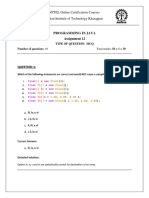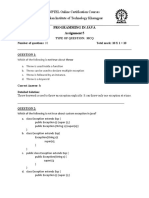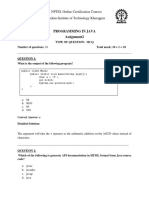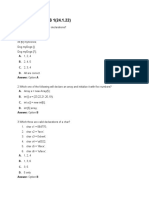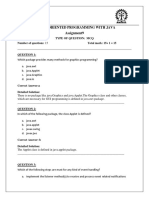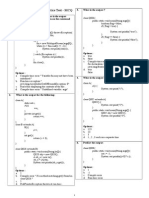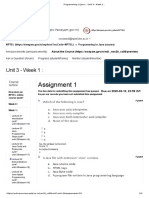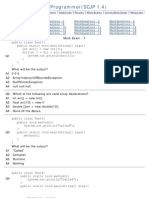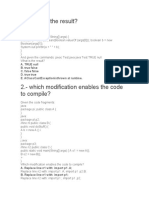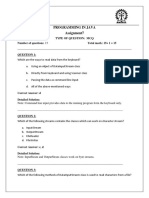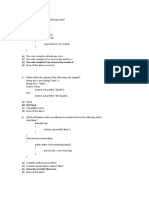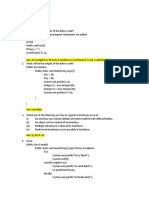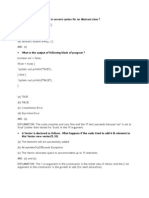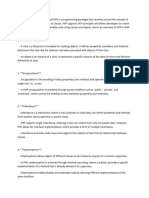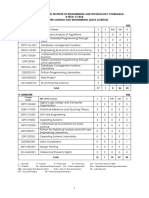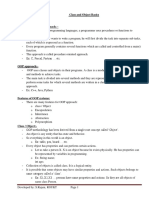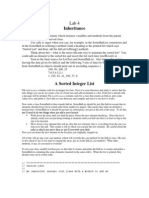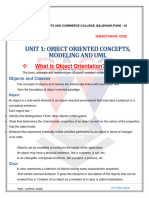0% found this document useful (0 votes)
375 views8 pagesObject Oriented Programming With Java Assignment 12
This document contains a 15 question multiple choice quiz on Object Oriented Programming with Java. The questions cover topics like if statements, inheritance, access modifiers, arrays, exceptions, threads, and applets. Each question includes the multiple choice options, correct answer, and a short explanation of the detailed solution.
Uploaded by
P.HoneyCopyright
© © All Rights Reserved
We take content rights seriously. If you suspect this is your content, claim it here.
Available Formats
Download as PDF, TXT or read online on Scribd
0% found this document useful (0 votes)
375 views8 pagesObject Oriented Programming With Java Assignment 12
This document contains a 15 question multiple choice quiz on Object Oriented Programming with Java. The questions cover topics like if statements, inheritance, access modifiers, arrays, exceptions, threads, and applets. Each question includes the multiple choice options, correct answer, and a short explanation of the detailed solution.
Uploaded by
P.HoneyCopyright
© © All Rights Reserved
We take content rights seriously. If you suspect this is your content, claim it here.
Available Formats
Download as PDF, TXT or read online on Scribd
/ 8
